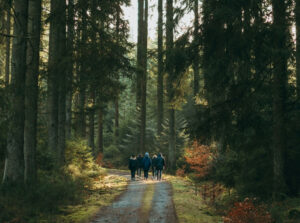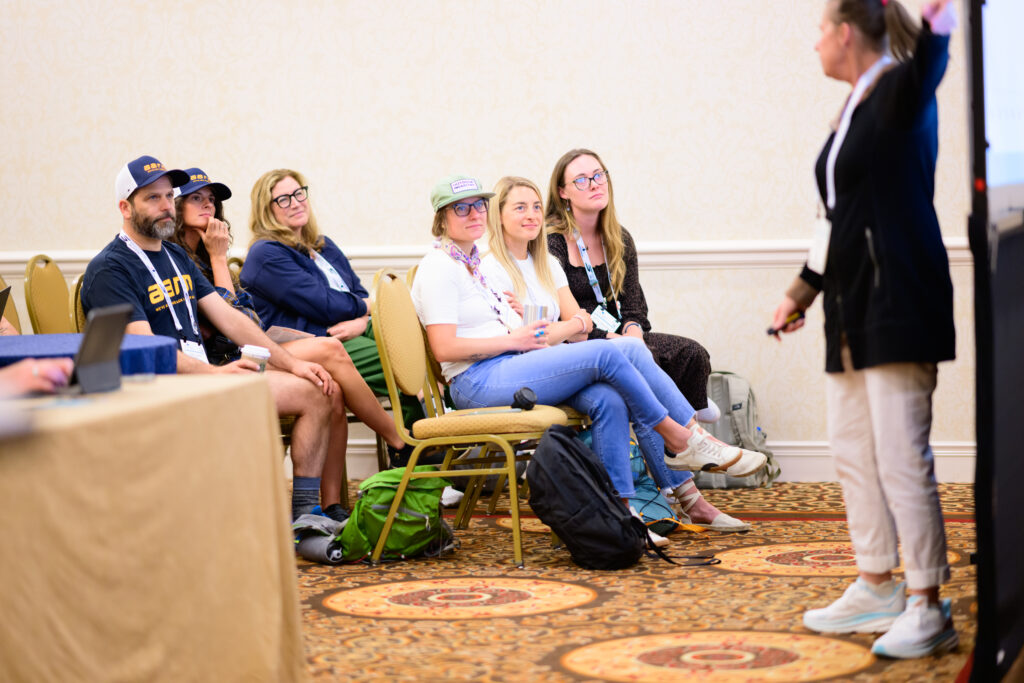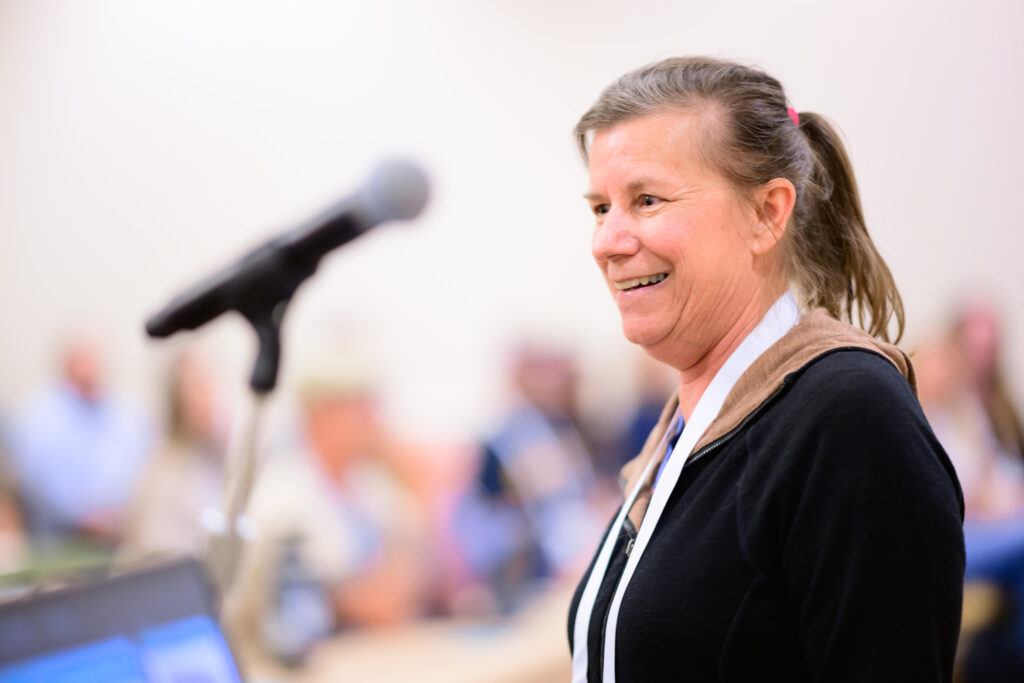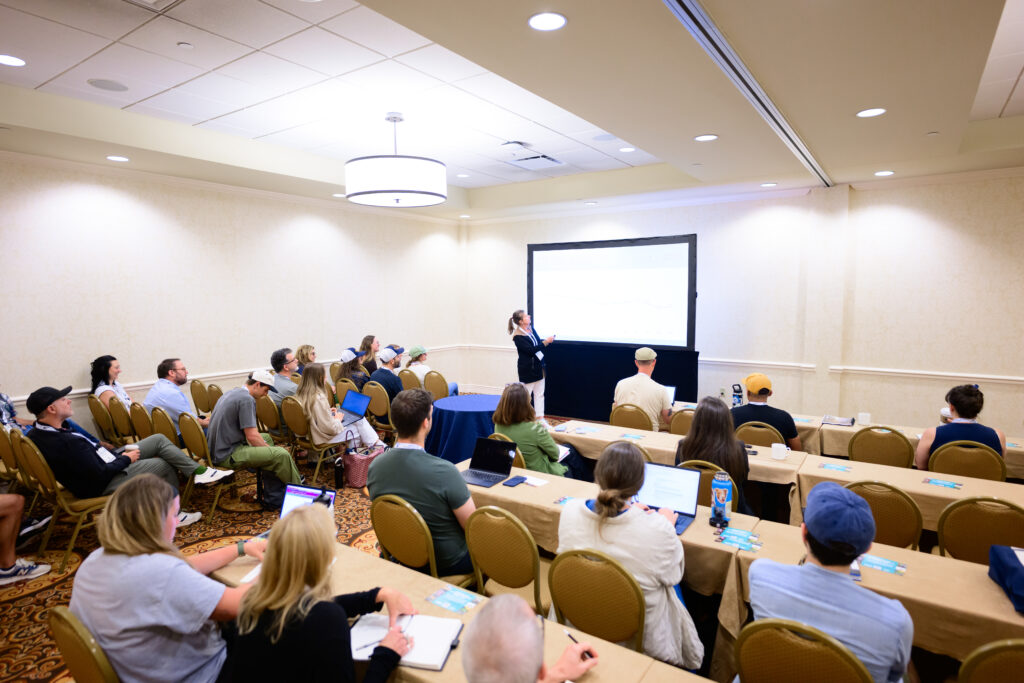Switchback at TRE, December 2-4, 2025 in San Antonio, TX
•
Switchback Spring, June 16-18, 2026 in New Orleans, LA

For decades, the outdoor industry has focused its attention on hardcore enthusiasts. New research presented at Switchback Spring 2025 signals that the broader base of consumers should command more of the industry’s attention.
The new study, Outdoor Consumer Trends 2025: Insights for a Changing Market, categorizes consumers as “core,” “active,” and “casual.” While core consumers spend the most time outdoors, the study shows that people in the active and casual categories account for more than 90 percent of dollars spent on outdoor apparel and gear.
Outdoor Consumer Trends 2025 was produced by the Outdoor Industry Association (OIA) and Switchback organizer Diversified. During Switchback Spring, OIA Research Director Kelly Davis presented highlights of the research.
“We’ve got a giant participant base,” says Davis, noting that 181.1 million Americans (about 60% of the population) participate in outdoor activities. That being said, outdoor specialty stores aren’t attracting a significant number of these people, says Kelly, noting, “The outdoor industry has not spent significant time or resources to understand casual participants.”
To address that issue, the new research not only delves deeper into the mindset and spending habits of core consumers but also examines people who aren’t avid outdoorspeople. It reveals the types of activities they enjoy, the kinds of products they purchase, the amount of money they spend, their methods of researching products, and the places they shop.
Here are some key highlights from the study:
Compared to past Consumer Trends reports, the 2025 study uses a more nuanced method of classifying people. While past reports focused on how often a person pursued an activity, the new study also considers what they hope to get out of the experience. Are they seeking an adrenaline rush? Are they simply seeking calm and peacefulness? It turns out most people head outdoors to seek something fairly low-key.
According to the new research, core participants—people seeking excitement and epic adventures—represent only about 5% of the overall outdoor market. The report notes, “72% of specialty outdoor consumers said their approach to outdoor activities was casual; more focused on finding happiness and calm than excitement or skill building.” These less-intense consumers include those in the “active” category (50% of the market) and the “casual” category (42% of the market).

If retailers are wondering where they should focus their attention, they should consider “active” participants. While they don’t get outdoors as often as core customers, they represent a significant number of people who enjoy outdoor recreation frequently to connect with others and improve their physical and mental health. Plus, they spend a decent amount of money on outdoor goods.
“The person that’s most likely to walk in your door is in the active category,” says Davis, noting these consumers comprise 55.6% of people shopping at independent retail stores.
“One thing I’ve noticed about the active people is they spend a lot of money and much more than the casual category,” she says.
According to the report, an active participant will spend about $1,600 on outdoor goods in a year, while a casual participant will spend $1,400. Considering there are about 181 million U.S. participants, people in the active category would spend a total of $145 billion, while casual participants would spend $106 billion and core participants would spend only $19.8 billion. As the report notes, “Spending by core consumers is dwarfed by active and casual consumer spending.”
In its examination of spending, the Consumer Trends report also shows which activities are commanding the most dollars.
According to the report, “Campers, hunters, and snow sports consumers spend the highest average annual amounts on gear while snow sports consumers, hunters, and bicycle consumers spend the most annually on apparel. Walkers and hikers tend to spend the smallest amounts on gear and apparel.”
Skiing and snowboarding were the top categories, with people spending an average of $997 per year on apparel and $897 on gear. Other leading categories were biking, hunting, and camping. For camping, the average spend for gear was $947, and the average spend for apparel was $797.
It’s no great surprise that the latest research shows people are shopping for outdoor goods online as well as in stores. It’s also no surprise that Amazon leads the pack for online sales; however, one notable finding is that Amazon is also the top shopping destination for core outdoor enthusiasts.
“Even in the group that we expect to be just absolutely connected at the hip with our specialty retailers, they’re going to Amazon more often than anybody else,” says Davis.
Following Amazon, the top sellers were mass retailers (Costco, Walmart, etc.), large sporting goods chains (Dick’s, Bass Pro, etc.) and brands selling directly to consumers. As for small independent retailers, they rank near the bottom, drawing 14.5% of consumers.
Outdoor retailers can expand their consumer base by attracting more people in the casual category, though the Consumer Trends study emphasizes that many of these people had bad experiences in specialty shops during COVID-19.
“Millions of dollars were likely swept off the table because the industry, including outdoor brands and retailers, failed to engage these customers,” the report says. “Many consumers went to mass market retailers to buy outdoor gear and apparel, and many headed to Amazon between 2022 and 2024.”

While specialty stores lost many casual customers after COVID, the good news is they have a great opportunity now to win them back. According to the study, sales associates are still an essential source of information for people researching products. When consumers ranked the most important sources for product information, they put retail salespeople near the top, right behind websites and friends and family.
“That is one of the single most important strategic advantages you have as an independent specialty retailer,” says Davis. “You have the ability to build relationships with your customers. You have the knowledge and wisdom that you can give them.”
As retailers adjust to shifts in the consumer base, they must also consider the rocky economic landscape that lies ahead.
“Consumers are afraid of the job market, they’re afraid of rising prices, they’re afraid of perhaps more,” says Davis, noting that a downturn in the market is on the horizon. To maximize sales, it’s critical for the industry to really understand the consumer base and engage them effectively.
It’s essential to look beyond hardcore enthusiasts and understand what most consumers seek from outdoor experiences.
“How many pictures have you seen of somebody hucking off a cliff? Because that’s what we think everybody aspires to,” says Davis. “But that’s not what we’re aspiring to anymore.”
In the survey, people were asked what they hope to gain from going outdoors, and the number one response from all groups was “happiness,” says Davis. Not thrills. Not adrenaline-filled adventures. Just happiness.



